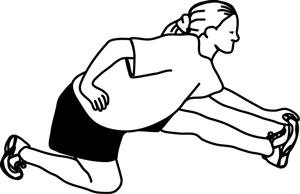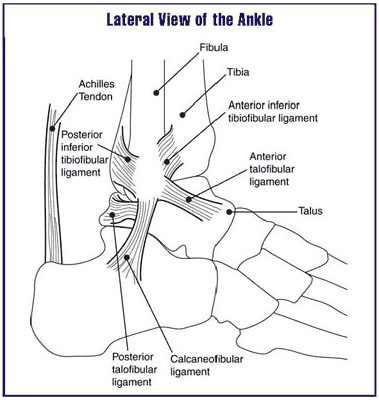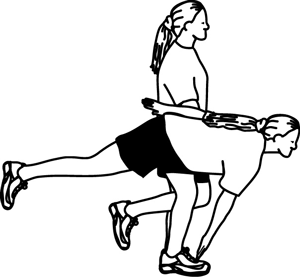Four Effective Methods for Reducing the Risk of Injury in Soccer
The goal of soccer training is improved performance, injury prevention, soccer skills and tactics. Improved performance should never come at the cost of an injured player. Goal #1 is injury prevention in a soccer conditioning program. Goal #2 is to improve performance.
In part one of this series we talked about the incidence of injuries and
how to treat to them. This article and the next one will delve
specifically in how to reduce the number of injuries. I am not writing
about how to stop them altogether because that will be impossible. Freak
accidents happen all the time. Part three will discuss ACL injuries.
Getting hurt is part of sports. Knagging knee pain, tight backs, torn
ACLs, sprained ankles come with the territory. But there are things you
as a player, parent or coach can do to reduce the chance of getting
injured. I look back to my playing days and all the nagging injuries I
had to deal with. I remember back pain and knee pain. Later, at around
21 years old I developed chronic Achilles tendonitis. Iíve had my fair
share of sprained and fractured ankles. Luckily Iíve never had a torn
ACL(knock on wood) or anything similar. The worst acute injury was
probably the fractured ankle.
You probably can tell your own story of frustration. And for many of you
it will be worse. But youíre not reading this article to dwell on the
past. Youíre reading this article to reduce injury in the future.
Whether for you, your players or a child these tips should accomplish a
couple goals:
1. Motivate you to spend extra time on sometimes mundane tasks to
be on the field more.
2. Understand what you can do to reduce your injuryability (I may have
made up that word)
Letís get to work!
Stretch, Stretch, Stretch
Without getting too technical when a muscle on one side of the body is
tight the neural drive to the opposing muscle can be reduced. This is
called reciprocal inhibition ( I just went technical on you.) For
example, a tight psoas muscle can actually decrease the neural drive to
the glutes, which are on the opposite side of the psoas. Reciprical
inhibition leads to injury. Take the time to stretch to reach optimal
flexibility. A tight muscle can actually lead to an injury somewhere
else.
leads to injury. Take the time to stretch to reach optimal
flexibility. A tight muscle can actually lead to an injury somewhere
else.
Follow me on this. First you have a tight psoas (hip flexor). This
causes decreased neural control on the Glutes. This Gluteal inactivity
leads to the need of other muscles to compensate. In this case the
hamstring would need to kick into overdrive to compensate for weak
glutes. This can eventually lead to injury. I know this is a different
angle. But it is a reality. Obtain optimal flexibility with your
athletes so that all the muscles in the body work properly.
Implement the FIFA injury prevention program
Isnít it nice to be told what to do. Only sometimes. Well, this is a
case when it is good. FIFA came out with 11 steps + to preventing
injury. From core training to plyometrics the FIFA 11 covers it. Let me
quickly outline ďthe 11+Ē injury prevention exercises. The program is
broken up into 3 parts and a few levels.
Part 1 is about running exercises. It has you doing straight, backwards,
circling, hip out types of running drills. Part 2 goes into strength,
plyometrics and balance. Here you will see core exercises, jumping
exercises as well as strength exercises. As we move to part 3 we return
to running. This level also deals with plyometric exercises and agility.
Coaches and players you must demand it of yourself to spend time using
this program. You owe it to yourself and to your players to reduce the
incidence of injury. Use it dang it!
Balance Training reduces Ankle injuries and Other Injuries
Are you balance training? If not you should be. It has been shown through balance training alone you can reduce the risk of ankle sprains. 1 Another study showed the more time spent balance training the lower the rate of overall injuries, hamstring injuries and other injuries. 3
When planning your balance training program you should push your limits. This means that if standing on one leg is no problem you need to bring it up a level. But we are not all created equal. For another athlete, standing on one leg may provide the exact challenge he/she needs. Therefore, that athlete should work on one leg balances. As it becomes easier that same athlete will up the intensity.
How might you up the intensity of a single leg balance on the ground?
-throw and catch a medicine ball on one leg
-stand on a wobble board on one leg
-stand on a stability pad
-close your eyes
Find ways to challenge the balance. To make it fun have the
athletes play the old game where you try to push one another over by
only touching the others hands. The athletes will face each other,
push both hands in front like they are giving a double high five.
Sometimes one person will unexpectedly move the hands. This could
challenge the other person's balance. Do this on one leg.
(Important note: It may not be applicable to everyone. Only those
who have the appropriate level of balance.) First person to 3 touch
their other leg 4 times loses.
Proprioceptive and neuromuscular training reduces injuries in Pivot Sports
A review of 7 studies showed that proprioceptive/neuromuscular training
effectively reduced the incidence of sports injuries among adolescent
athletes during pivot sports. Is soccer a pivot sport? You better
believe it. 1
I understand it is hard to take time out of practice to do balance
training. Here is a solution. Develop the balance training program and
assign your athletes to do it on their own time.
Not warming up
Researchers in Norway studied 125 football clubs to find the effects
of a comprehensive warm up on reducing the risk of injuries. They
studied 1892 female players aged 13-17. The intervention was a warm-up
program to improve strength, awareness, and neuromuscular control. They
found the risk of severe injuries, overuse injuries were reduced through
a structured warm up program. 2 The PEP ACL Injury Prevention program
mentioned that by wamring up your muscles first, you reduce the risk of
injuries.4
neuromuscular control. They
found the risk of severe injuries, overuse injuries were reduced through
a structured warm up program. 2 The PEP ACL Injury Prevention program
mentioned that by wamring up your muscles first, you reduce the risk of
injuries.4
Summary
Injury prevention is vital. I only highlighted a couple things you
should look at when reducing injuries. Critical to success in soccer is
being able to practice and play. If you cannot do that because of injury
you are severely hampering your development. Take these suggestions and
start your injury prevention program today.
2. http://www.ncbi.nlm.nih.gov/pubmed/19066253?log$=activity
3.http://www.ncbi.nlm.nih.gov/pubmed/19567665?itool=EntrezSystem2.PEntrez.Pubmed.Pubmed_ResultsPanel.Pubmed_RVDocSum&ordinalpos=4
4. http://www.aclprevent.com/pepprogram.htm
Other injury prevention Links
Injury prevention article Part one
